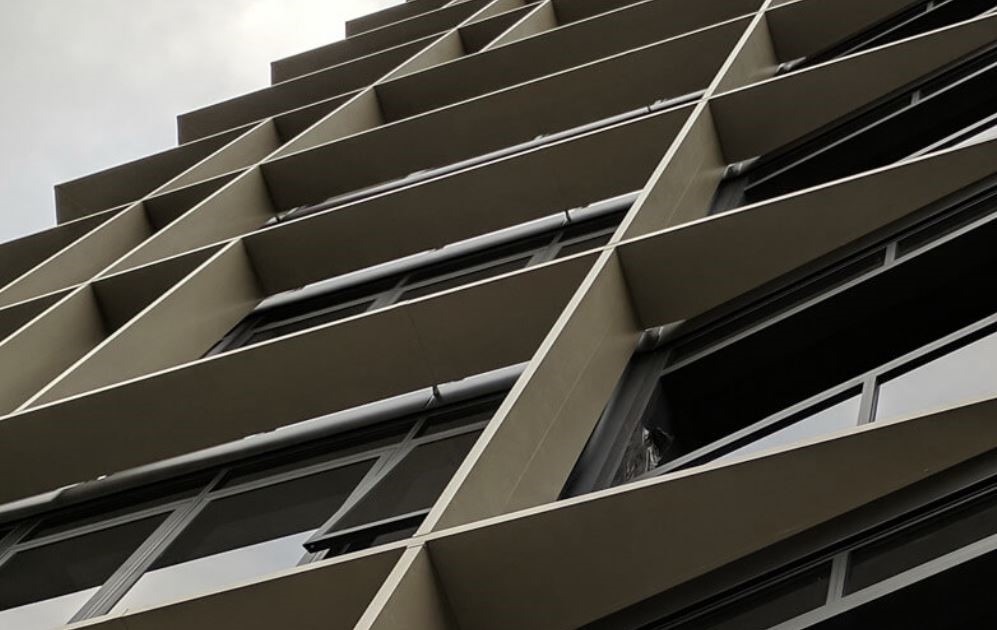YOU ARE HERE:

How Commercial Shade Structures Contribute to Green Building Initiatives
Jamie Howard In Commercial Shade Structures
In today’s increasingly eco-conscious world, the concept of sustainability has moved to the forefront of commercial design and construction. Businesses are seeking innovative ways to reduce their environmental impact, cut down on energy usage, and provide comfortable environments for both customers and employees. One of the most effective yet often overlooked solutions in this space is the installation of commercial shade structures. Whether for commercial car parks, resorts, hotels, or other public spaces, shade structures are playing a critical role in the shift toward sustainable and green building practices.
What Are Commercial Shade Structures?
Commercial shade structures come in various designs and sizes, from shade sails and canopies to more complex permanent installations like sunhoods. These structures are strategically designed to provide shelter and protection from harsh weather conditions, particularly the intense sunlight and heat that is prevalent across much of Australia. Award-winning shade structures, designed by leading manufacturers and installers, are built to last, offering durability, resilience, and functionality.
But beyond their immediate practical uses, these shade structures have a broader, lasting impact on sustainability and green building initiatives. For industries like hospitality, retail, and commercial spaces, shade structures can significantly improve energy efficiency while also enhancing the aesthetic appeal of a property.
The Role of Shade Structures in Energy Efficiency
One of the most important ways that commercial shade structures contribute to sustainability is through energy efficiency. Buildings exposed to direct sunlight absorb a significant amount of heat, particularly through large windows and glass facades, leading to increased reliance on air conditioning to maintain comfortable indoor temperatures. This contributes to higher energy consumption, which not only increases operational costs but also significantly adds to a building’s carbon footprint.
By installing shade structures, such as sunhoods or external shading systems, businesses can dramatically reduce the amount of heat entering a building. These structures block and diffuse sunlight, thereby reducing the solar heat gain inside the building. The result is a cooler, more comfortable interior without the excessive use of air conditioning systems. Particularly in regions like Queensland, where sunlight can be intense year-round, the installation of commercial shade structures can translate into measurable reductions in energy consumption.
In addition, businesses that invest in energy-efficient solutions like shade structures may qualify for green building certifications such as Green Star or NABERS. These certifications recognise the efforts made by businesses to reduce their environmental impact, and can enhance a company’s reputation as a leader in sustainability.
Commercial Car Park Shade Structures and Sustainability
Commercial car parks are another area where shade structures contribute to sustainability. Car parks, whether for retail outlets, office buildings, or public spaces, typically cover vast areas that are exposed to sunlight. The combination of asphalt or concrete surfaces and the metal bodies of parked vehicles leads to a significant build-up of heat, creating what’s known as an “urban heat island” effect.
Award-winning shade structures specifically designed for commercial car parks offer an effective solution. By covering large parking areas with shade sails or other permanent structures, the temperature within the car park can be significantly reduced. This not only improves the comfort of visitors but also reduces the heat that radiates from the car park into surrounding areas, contributing to a more sustainable urban environment. Additionally, shaded car parks help protect vehicles from UV damage, which can extend the life of paintwork and interiors, reducing the need for frequent repairs or replacements.
From a sustainability perspective, these commercial car park shade structures can also integrate renewable energy solutions, such as solar panels. By installing solar panels atop the shade structures, businesses can generate clean energy on-site, reducing reliance on the grid and lowering their carbon footprint even further. The combination of shading and solar power creates a powerful solution for any commercial property seeking to enhance its sustainability credentials.
Shade Structures for Resorts and Hotels: Combining Luxury and Sustainability
Resorts and hotels, particularly those in Queensland’s tropical and subtropical regions, face a unique set of challenges when it comes to sustainability. Guests expect comfort, luxury, and outdoor amenities, but maintaining these standards in hot, sunny environments can require significant energy expenditure.
Shade structures for resorts and hotels offer a dual benefit: they improve guest comfort by providing shelter from the sun, and they reduce the energy load on cooling systems by preventing heat build-up in outdoor areas. Whether it’s poolside shade structures, pergolas for outdoor dining, or large canopies covering entrance areas, these installations help to create cool, shaded spaces that encourage outdoor activity while reducing the need for air-conditioned indoor spaces.
In addition to enhancing guest comfort, resorts and hotels that invest in high-quality, award-winning shade structures can use their sustainability efforts as a selling point. More and more travellers are seeking eco-friendly accommodation, and resorts that can demonstrate their commitment to sustainability—whether through reduced energy consumption or green certifications—can gain a competitive edge in the hospitality market.
The Impact of Sunhoods in Sustainable Building Design
Sunhoods, a type of external shading structure, are particularly effective in reducing heat gain through windows and glass surfaces. These horizontal or vertical overhangs are designed to block direct sunlight while still allowing for natural daylight to enter the building. This reduces the reliance on artificial lighting, which can further lower energy usage.
Incorporating sunhoods into commercial building designs, particularly in office buildings and retail centres, is an effective way to combine energy efficiency with aesthetic appeal. Sunhoods can be custom-designed to match the architectural style of a building, ensuring that they not only function as sustainable features but also enhance the overall visual appeal of the property.
As part of broader sustainability initiatives, sunhoods and other shading solutions help businesses meet regulatory standards related to energy efficiency, making them a valuable addition to green building strategies.
Conclusion: A Smart Investment for a Sustainable Future
Commercial shade structures, whether used in car parks, resorts, hotels, or other commercial spaces, are far more than simple functional installations. They are key components of sustainable building design, offering a wide range of environmental benefits. From reducing energy consumption to lowering urban heat island effects, award-winning shade structures contribute significantly to green building initiatives, while also enhancing the aesthetic and functional appeal of commercial properties.
For businesses that are committed to reducing their environmental impact and improving energy efficiency, investing in shade structures is a smart and sustainable decision. By working with experienced, award-winning manufacturers and installers, businesses can ensure that they are choosing the most effective and durable solutions for their needs, ultimately contributing to a more sustainable, eco-friendly future for all.
Share:
Jamie Howard - Director
Co-founder and Director Jamie has been hands-on in the shade and steel industry since leaving school. With over 15 years’ experience in shade, membrane and steel projects, Jamie is excited about the design opportunities shade structures offer in the commercial and industrial sectors. Jamie’s extensive design skills give him a competitive edge in situations with technical design complexity. He has won two personal industry awards for his designs, alongside many company-won awards.

